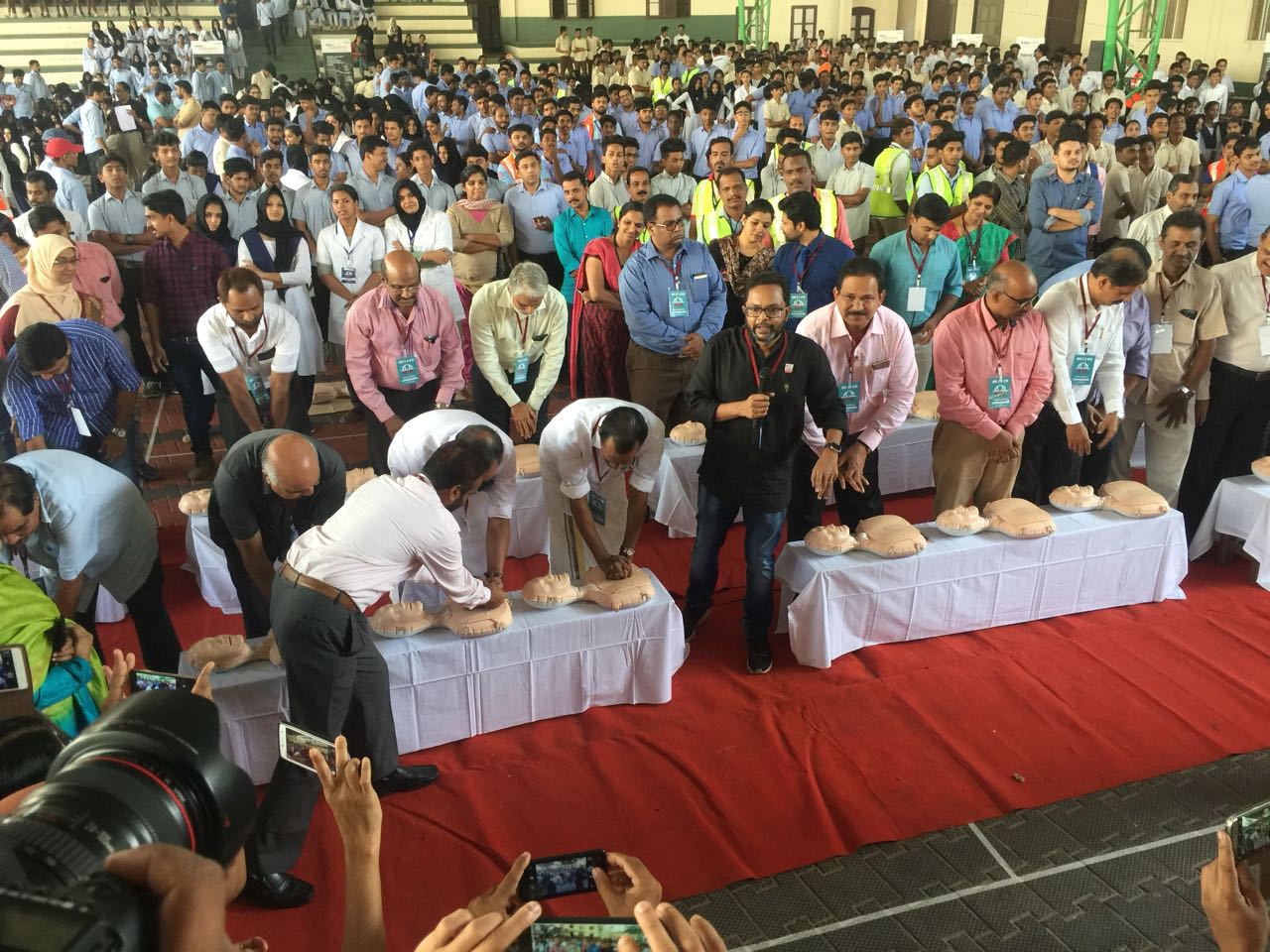
The Association Abroad: CPR in India
Even though we have “American” in our name, the American Heart Association is dedicated to promoting CPR and First Aid education in communities around the world. This month, we’re taking some time this week to recognize activities our Instructors in India undertook earlier this year. In November 2017 and January 2018, these Instructors led special events in India that trained thousands in lifesaving techniques, from professional responders to young orphans.

Nearly 5,000 students learned Hands-Only CPR during an event in Calicut hosted by the ANGELS International Foundation.
The first event was hosted in honor of Bal Diwas—India’s Children’s Day holiday on November 14. Hosted by the ANGELS International Foundation at the JDT Islam Orphanage in Calicut, and supported by Calicut District Administration, Lions International, Laerdal Medical India and other local institutions and businesses, the event focused on a special full-day training session where an incredible 5,000 students were taught Hands Only CPR (HOCPR) in 30-minute intervals of 200 students each. Led by Instructor Dr. Venugopal P.P., executive director of ANGELS International Foundation, the event earned extensive media coverage and has elicited interest in recreating that training from cities and public service groups across the country.
On the heels of the Calicut event, the Gandhi Medical College Alumni Association (GMCAA) in Hyderabad, India invited American Heart Association Instructors to participate as special guests in a mass community HOCPR training. Approximately 2,500 trainees participated, including local police officers and cadets, primary school students, community caregivers, and security and housekeeping staff from Gandhi Medical College. This event was supported by Laerdal Medical India and led by Dr. Ravinder Surakanti, President of the GMCAA.

The Ghandi Medical College Alumni Association hosted a massive CPR training event in Hyderabad, introducing more than 2,500 new lifesavers into the community.
The keynote speaker for the training in Hyderabad was the Honorable Mr. Narasimha Reddy, Telengana State’s Minister for Home. During his address, the Minister emphasized the importance of community education in CPR to save lives. He also endorsed making CPR part of high school education as well as a requirement for the State Law Enforcement Department, stating that political support such as this will truly help build “a nation of lifesavers” in India.
While awareness of and access to CPR education are popular across much of the United States, high-profile events such as these in India are big wins for the Association’s international outreach. As the world’s second-most populous nation, India has incredible potential for becoming a worldwide leader in CPR education. Moreover, these programs and their resulting publicity are likely to assist with upcoming efforts to create a nation of lifesavers in India.













